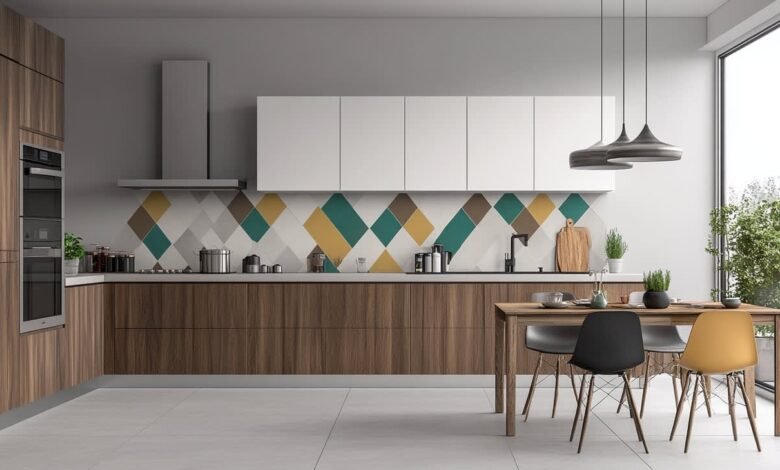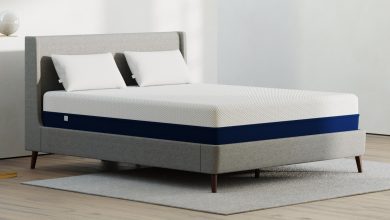Questions You Must Ask Before Buying Tile for Your Project

So, you’re thinking about new tile. Maybe it’s for that bathroom you’ve been dreaming of updating, or perhaps your kitchen floor has seen one too many spills. Whatever the reason, walking into a tile showroom or browsing online can feel a little like trying to take a drink from a firehose. There are thousands of options, a sea of colors, and a dizzying array of technical terms. It’s exciting, but it’s also easy to feel overwhelmed.
The good news is that you don’t need to be an interior designer or a construction expert to make a great choice. The secret to a successful tile project isn’t about finding the single most beautiful tile in the world—it’s about finding the right tile for your specific space, lifestyle, and budget. And how do you do that? You ask the right questions.
Think of this as your personal guide, a friendly chat to prepare you for the journey ahead. We’re going to walk through all the essential questions you should consider, long before you ever hand over your credit card. Asking these questions will transform you from a confused shopper into a confident homeowner, ready to make a decision you’ll be happy with for years to come.
Part 1: The Big Picture Questions (Before You Even Look at a Single Tile)
Before you get swept away by a beautiful pattern or a trendy color, you need to lay the groundwork. These questions are all about your project’s foundation.
1. What room is this for, and what is the room’s main purpose?
This is the very first question you should answer because it dictates almost everything else. A tile that’s perfect for a low-traffic bathroom wall might be a disaster for a busy kitchen floor.
- Kitchen Floor: This is a high-traffic area. It needs to be durable, scratch-resistant, and easy to clean. It also needs to be safe, so a very slippery tile is a bad idea. Spills are common, so water resistance is key.
- Bathroom Floor: Safety and water resistance are your top priorities here. You’ll want a tile with some texture to prevent slips, especially when the floor is wet.
- Shower Wall/Area: This tile needs to be 100% waterproof. Porcelain is a champion here.
- Backsplash: This is often where you can have the most fun! Since it’s not walking on, durability against foot traffic isn’t a concern. You can focus purely on aesthetics and choose more delicate materials like glass or hand-painted tiles.
- Living Room or Entryway: These areas see a lot of foot traffic, so durability is still important. An entryway also has to handle dirt, water, and salt from the outside, so a tough, easy-to-clean tile is best.
2. What is my realistic budget?
Let’s talk about money. Tile prices can range from a few dollars per square foot to over a hundred. Being honest with yourself about your budget from the start will save you heartache later. Remember, your budget needs to cover more than just the tile itself. You need to account for:
- The cost of the tile (per square foot).
- Delivery fees.
- Materials like mortar, grout, and sealant.
- Any special tools you might need to rent or buy if you’re doing it yourself.
- The cost of a professional installer if you’re hiring one.
A great tip is to decide on your total project budget first, then subtract the estimated costs for installation and supplies. What’s left is your budget for the actual tile. Walking into a showroom with a clear number helps the consultant steer you toward options you can actually afford.
3. What is my personal style?
This is about making sure the tile you choose will make you happy every time you walk into the room. Are you drawn to modern, clean lines? Or do you prefer a cozy, farmhouse feel? Maybe you love a bold, eclectic look.
A fantastic way to figure this out is to create a simple inspiration board. You can use a website, or just start a folder on your phone. Save pictures of rooms you love from magazines or online. After a while, you’ll start to see a pattern. Do you always save pictures of white, bright bathrooms? Or are you drawn to kitchens with dark, moody floors? This collection of images will be your best friend when it comes time to explain your vision to someone else.
4. Am I doing this myself or hiring a professional?
Your answer here can influence the type of tile you choose. Some tiles are much easier for a beginner to install than others.
- For the DIYer: Smaller tiles that come on mesh-backed sheets (like mosaics) or standard square tiles can be more forgiving. Large-format tiles are trendy but can be very tricky to install because they require a perfectly flat floor and are heavy and difficult to cut without professional tools.
- For the Professional Install: If you’re hiring a pro, you have more freedom to choose complex tiles. Just be sure to ask them if they have experience with your chosen material, especially if it’s something delicate like natural stone or large-format porcelain.
Part 2: The Nitty-Gritty Tile Questions (The Technical Stuff Made Simple)
Now that you have the big picture in mind, it’s time to get into the details. These are the questions you’ll want to ask about the tiles themselves.
5. What is this tile made of? Is it porcelain, ceramic, or natural stone?
This is one of the most important distinctions in the tile world.
- Ceramic Tile: Made from clay and fired in a kiln. It’s then coated with a glaze that gives it its color and pattern. It’s a great, affordable option for walls and lower-traffic floors.
- Porcelain Tile: A type of ceramic tile, but it’s made from a denser clay and fired at a higher temperature. This makes it incredibly strong, durable, and resistant to water. For any floor that will see a lot of action (kitchens, entryways, bathrooms), porcelain is usually the best bet. It’s also great for outdoors because it’s frost-resistant.
- Natural Stone: This includes marble, granite, slate, and travertine. No two pieces are exactly alike, which gives a beautiful, unique look. However, stone is generally more porous, meaning it can stain easily if not sealed properly. It also requires more maintenance than porcelain or ceramic.
6. What is the PEI Rating? (How tough is it really?)
The PEI Rating is a simple scale that tells you how resistant the tile’s surface is to wear and abrasion. It’s like a durability report card.
- PEI I: Suitable only for walls (like a bathroom wall that won’t be touched).
- PEI II: Good for residential bathroom floors where soft-soled shoes are worn.
- PEI III: Appropriate for all residential floors (like living rooms and bedrooms).
- PEI IV: Good for all residential areas, including high-traffic spots like entryways, kitchens, and hallways.
- PEI V: The toughest rating, suitable for commercial and heavy-duty residential use.
For most home floors, you’ll want a PEI rating of III or higher.
7. Is this tile slippery?
This is a major safety question, especially for bathrooms, kitchens, and entryways. The “slip resistance” is often called the Coefficient of Friction (COF). Don’t let the technical term scare you; just ask, “Is this tile slippery, especially when wet?” A good tile salesperson will know. In general, a textured, matte, or honed finish will be less slippery than a high-gloss, polished finish.
8. Does this tile need to be sealed?
This is a crucial question, particularly for natural stone and some types of unglazed porcelain and ceramic. Sealing is a process where a protective liquid is applied to the tile (and sometimes the grout) to prevent stains from liquids like wine or oil.
- Unglazed Tiles & Natural Stone: Almost always need to be sealed.
- Glazed Porcelain and Ceramic: Usually do not need to be sealed, as the glazed surface is already non-porous.
Always ask, “Does this tile require sealing?” If the answer is yes, make sure you factor in the cost of the sealer and the extra time for application.
9. What about grout? What color and type should I use?
Grout is the material that fills the spaces between the tiles, and it has a huge impact on the final look.
- Color: Do you want the grout to blend in or stand out? A matching grout color creates a seamless, uniform look. A contrasting color (like dark gray with white subway tile) can make the pattern of the tiles pop and become a design feature itself. Keep in mind that light-colored grout will show dirt more easily, while dark grout can show every speck of dust or flour.
- Type: Sanded grout is used for wider grout lines (typically 1/8 inch or more). Unsanded grout is for thinner lines. There are also newer, epoxy-based grouts that are extremely stain-resistant and don’t require sealing, which can be a great choice for wet areas like showers.
Part 3: The Shopping and Logistics Questions (Sealing the Deal)
You’ve found a tile you love and it checks all the boxes. Now it’s time for the final, practical questions.
10. Can I take a sample home?
This is non-negotiable. Always, always, always take a sample home. Tile looks completely different under the bright, fluorescent lights of a showroom than it does in your own home. Tape the sample to your wall or place it on your floor. Look at it at different times of the day—morning, noon, and night—to see how it changes in natural and artificial light. Place it next to your cabinets, countertops, and paint swatches. Live with it for a day or two. This simple step is the single best way to avoid a costly mistake.
11. Is this tile in stock?
This seems simple, but it’s vital for your project timeline. If the tile is in stock, you can probably get it right away. If it needs to be special-ordered, it could take weeks or even months to arrive. Always ask, “Is this readily available, or is it a special order?”
12. What is the return policy?
Mistakes happen. Maybe you mismeasured, or perhaps you changed your mind after buying one box. Before you buy, understand the store’s return policy. Can you return unopened boxes? Is there a restocking fee? Knowing this can save you a lot of money and stress.
13. Do you recommend a specific installer?
While many stores won’t give a direct recommendation for liability reasons, it doesn’t hurt to ask. They often have a list of local installers who frequently shop there. You can also use this as an opportunity to gauge their customer service. A helpful Tile Place will want you to have a good experience from start to finish and might offer some general guidance on what to look for in an installer.
14. How much should I buy? (Accounting for waste)
You should never buy the exact square footage of your room. You need extra to account for cuts, breakage, and mistakes. A general rule of thumb is to add 10-15% to your total square footage for waste. For a complex pattern with a lot of cuts, you might even want to add 20%. A good salesperson can help you calculate this. It’s also a great idea to buy an extra box of tile and store it in your basement or garage. That way, if a tile gets cracked in five years, you have a perfect match for a repair.
15. Are all the tiles from the same dye lot?
Tiles are made in large batches called dye lots. The color can vary slightly from one batch to another. When you place your order, make sure you request that all your tiles come from the same dye lot. This ensures consistent color and shading throughout your installation. This information is usually printed on the box.
Bringing It All Together
Walking through these questions might seem like a lot, but it turns the chaotic process of buying tile into a simple, step-by-step plan. It empowers you to make a choice you can feel good about. You’ll be considering not just how the tile looks, but how it lives—how it feels underfoot, how it handles your morning coffee rush, and how it will look in the soft evening light.
Remember, the goal is to find a tile that fits your life and makes your home feel more like you. Take a deep breath, bring this list with you, and don’t be afraid to ask questions. The right tile is out there, and now you have the perfect map to find it.






